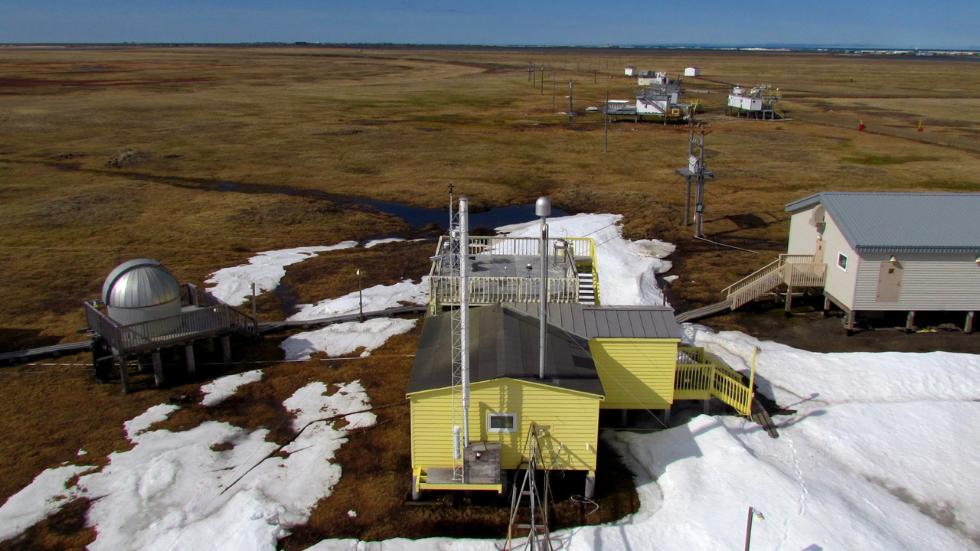
Snow is melting in Barrow, Alaska, earlier than it ever has since scientists at NOAA’s Barrow Observatory began recording it.
Staff at the observatory reported snowmelt occurred May 13, the earliest snowmelt date in 73 years of record-keeping, beating the previous mark set in 2002 by a full 10 days.

(NASA)
At 320 miles north of the Arctic Circle, Barrow is usually one of the last places in the United States to lose snow cover. But the early melting follows a record-setting winter that saw temperatures average more than 11 degrees above normal for the 49th State, shattering the previous record set in 2015.
On May 14, Fairbanks topped out at a record-breaking 82 degrees, surpassing the warmest readings that Lower 48 cities such as Boston, Cleveland and Denver have seen to that point in 2016.
According to weather.com meteorologist Brian Donegan, only two other times since 1904 has it been 82 degrees or warmer in Fairbanks that early in the season. The earliest Fairbanks ever topped 82 degrees was May 10, 1995 (84 degrees), followed by the second earliest the following day, May 11, 1995 (88 degrees).
The record temps are also taking their toll on Arctic sea ice. The annual Arctic sea ice maximum hit its lowest level ever recorded. That marks the second straight year that the winter maximum ice extent set a record low.
“I’ve never seen such a warm, crazy winter in the Arctic,” Mark Serreze, director of the National Snow and Ice Data Center, told Climate Central. “The heat was relentless.”
Arctic sea ice hit its maximum extent for the winter on March 24, when it averaged 5.607 million square miles, Climate Central reports. That beat last year’s record low of 5.612 million square miles, set on Feb. 25, 2015, by 5,000 square miles or just a bit smaller than the area of Connecticut.
“It’s like a trainwreck you can’t look away from,” wildlife biologist George Divoky said in a NOAA release. “You never know what you’re going to see and this year’s as big a mystery as any.”
